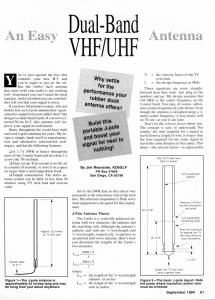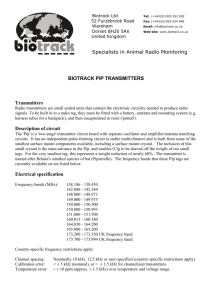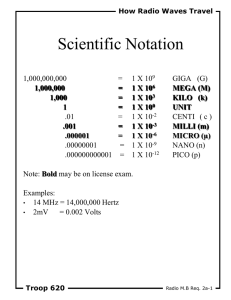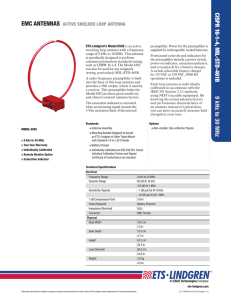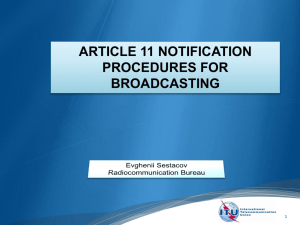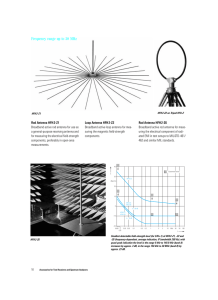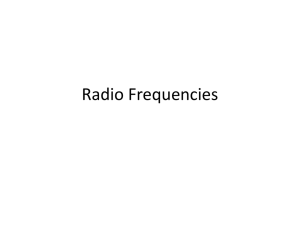Lecture 17
advertisement
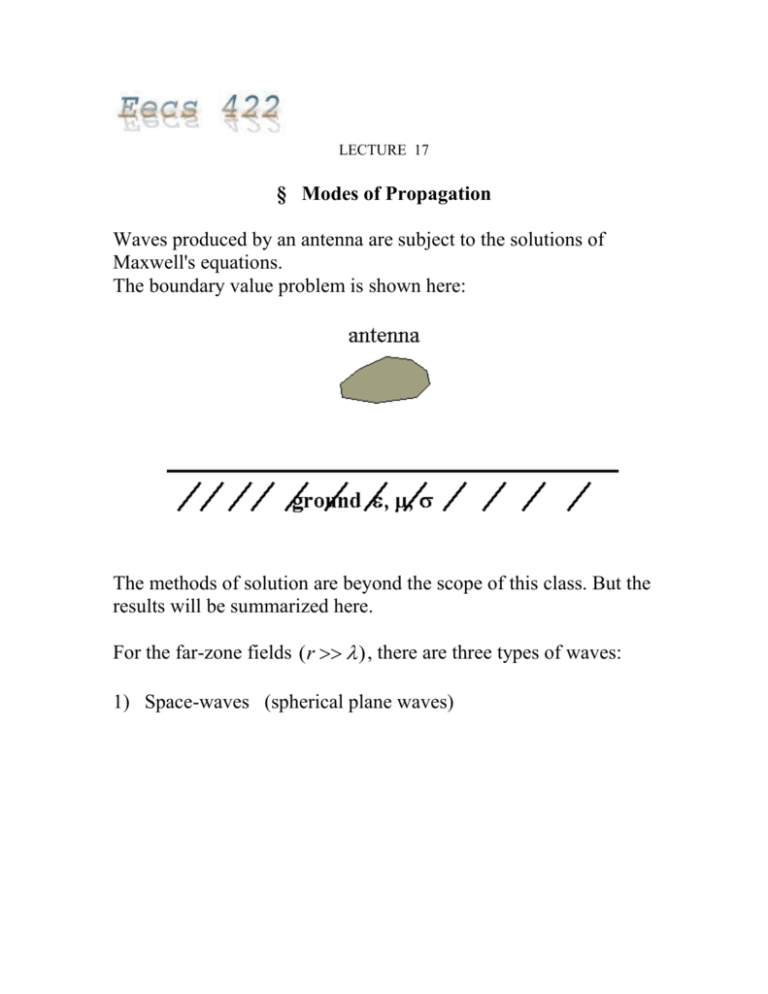
LECTURE 17 § Modes of Propagation Waves produced by an antenna are subject to the solutions of Maxwell's equations. The boundary value problem is shown here: The methods of solution are beyond the scope of this class. But the results will be summarized here. For the far-zone fields ( r ) , there are three types of waves: 1) Space-waves (spherical plane waves) The ground acts as a reflector with certain losses, depending on the frequency band. 2) Sky-waves Space-waves reflected and refracted by the ionosphere back to the earth. Within certain frequency bands, ionosphere acts like a plasma. 3) Surface waves (ground waves) A special type of wave where the power is confined near the surface Each of the three types of waves is for particular frequency bands due to the nature of ground and ionosphere material characteristics. VLF: 3-30 KHz LF : 30-300 KHz MF : 300-3000 KHz HF : 3-30 MHz VHF: 30-300 MHz UHF: 300-3000 MHz SHF: 3-30 GHz Surface-Wave for short distance, <100 Km Sky-Wave long range, hundreds Km Space-Wave shorted range (<10 Km) path loss is too much for a longer range SHF Microwaves § Space-wave propagation Suitable for VHF, UHF and Microwaves, particularly important in current information technology. Free-space (spatial) loss If S=incident power density at a receiver, PR ( power received) Ae S , where Ae : effective antenna aperture. Also, from antenna theory, max antenna gain (assuming that the receiver is at power peak) 4 GR 2 Ae If radiation from an antenna is uniform (never in the real case) P total radiated power S T 2 4 r for non-uniform (anistropic) radiation: P S T 2 GT 4 r Friis formula: 2 P PR S GT T 2 GT GR 2 4 4 r 2 PR Power received GT GR PT Power out of a transmit ter 4 r LF spatial loss P 4 r 4 r LF T GT GR f PR c 2 2 Note: for a fixed distance LF if f Implication for 1-2GHz: f is high (109 ) LF is high Cells (with local hubs) are needed cellular phone If we express LF in dB, we have: [eq 4-22] 4 R LF ( dB) 10 log f 106 5 MHz 3 10 R in Km for distance c = 3 105 Km/sec 2 40 LF (dB) 20 log 20 log R 20 log f MHz 3 2 LF (dB) 32.44 20 log R 20 log f MHz distance increase LF frequency increase LF Total path loss: L LF Lex Example If a system's max allowable loss is 148.3 dB, what is the max range the system can use at 900MHz? (ignore excess loss) 148.3 32.44 20 log R 20 log 900 20 log R 56.77 R 689Km.

